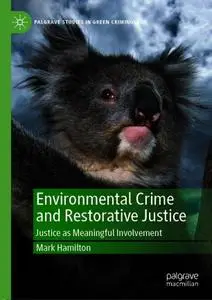Environmental Crime and Restorative Justice: Justice as Meaningful Involvement by Mark Hamilton
English | EPUB | 2021 | 272 Pages | ISBN : 3030690512 | 1.6 MB
This book explores the use of restorative justice approaches in the context of environmental crimes. It critically assesses regular criminal justice approaches with regard to green crimes and explores restorative justice conferencing as an alternative. Focussing on justice approaches in Australia and New Zealand, it argues that court processes following environmental offending provide minimal to no offender and victim voice, interaction, and input, rendering them invisible.



